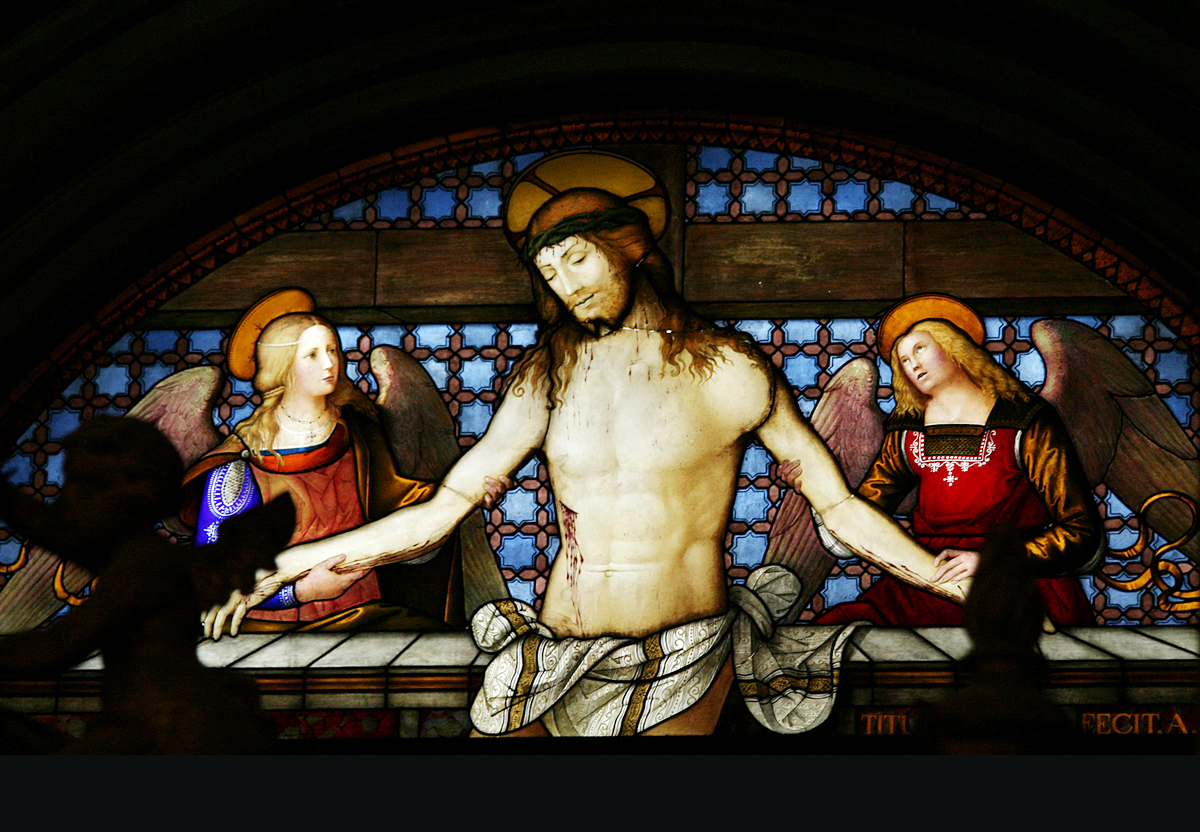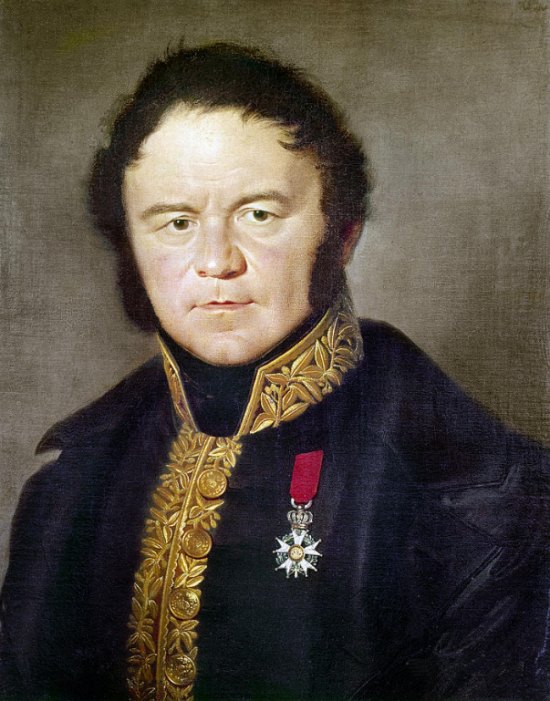|
Tito Moretti
Tito Moretti (Perugia, 1840–1913) was an Italian painter and manuscript illuminator. Biography He was the younger brother of Francesco Moretti, who had trained with Silvestro Valeri at the Academy of Fine Arts of Perugia. Tito also trained at the academy, and collaborated for over a decade with Francesco in painting enamel on glass. Tito later became academic of merit and professor of design at the Royal Technical School. Among his works are two large windows: one depicting a ''Pietà with Angels'' (1874, Cathedral) and the other a half-figure ''Madonna''. He also worked as a manuscript illuminator An illuminated manuscript is a formally prepared document where the text is often supplemented with flourishes such as borders and miniature illustrations. Often used in the Roman Catholic Church for prayers, liturgical services and psalms, the ... of diplomas and awards. In the latter years, he painted many Umbrian landscapes. [...More Info...] [...Related Items...] OR: [Wikipedia] [Google] [Baidu] |
Perugia
Perugia (, , ; lat, Perusia) is the capital city of Umbria in central Italy, crossed by the River Tiber, and of the province of Perugia. The city is located about north of Rome and southeast of Florence. It covers a high hilltop and part of the valleys around the area. The region of Umbria is bordered by Tuscany, Lazio, and Marche. The history of Perugia goes back to the Etruscan period; Perugia was one of the main Etruscan cities. The city is also known as the University, universities town, with the University of Perugia founded in 1308 (about 34,000 students), the University for Foreigners Perugia, University for Foreigners (5,000 students), and some smaller colleges such as the Academy of Fine Arts "Pietro Vannucci" ( it, Accademia di Belle Arti "Pietro Vannucci") public athenaeum founded in 1573, the Perugia University Institute of Linguistic Mediation for translators and interpreters, the Music Conservatory of Perugia, founded in 1788, and other institutes. Perugia ... [...More Info...] [...Related Items...] OR: [Wikipedia] [Google] [Baidu] |
Francesco Moretti
Francesco, the Italian (and original) version of the personal name "Francis", is the most common given name among males in Italy. Notable persons with that name include: People with the given name Francesco * Francesco I (other), several people * Francesco Barbaro (other), several people * Francesco Bernardi (other), several people * Francesco di Giorgio Martini (1439-1501), Italian architect, engineer and painter * Francesco Berni (1497–1536), Italian writer * Francesco Canova da Milano (1497–1543), Italian lutenist and composer * Francesco Primaticcio (1504–1570), Italian painter, architect, and sculptor * Francesco Albani (1578–1660), Italian painter * Francesco Borromini (1599–1667), Swiss sculptor and architect * Francesco Cavalli (1602–1676), Italian composer * Francesco Maria Grimaldi (1618–1663), Italian mathematician and physicist * Francesco Bianchini (1662–1729), Italian philosopher and scientist * Francesco Galli Bibiena ... [...More Info...] [...Related Items...] OR: [Wikipedia] [Google] [Baidu] |
Silvestro Valeri
Silvestro Valeri (Rome, December 31, 1814 –1902) was an Italian painter and educator. He taught at Accademia di Belle Arti di Perugia. Biography As a young man, he was enrolled in the Academy of Fine Arts of St Luke in Rome. By his second year in 1827, he won first prize in design with ''The Dying Gladiator''. Among his instructors was Tommaso Minardi, professor of design at the Academy. Valeri remained for many years as a major assistant of Minardi. One of his first works was a ''San Primo'', commissioned by Prince Don Filippo Doria for the church of Santa Maria in Via Lata in Rome. In 1837, when there was an epidemic of cholera in Rome, Prince Borghese commissioned an oil canvas depicting '' St Francis of Sales visits prisoners'', and ''Four Evangelists'', in tempera for the private chapel of Prince Doria. The Prince also commissioned a ''Nativity'' for the church of the Fornari Tedeschi, next to Sant' Andrea della Valle. Valeri also painted portraits. In 1845, he won a com ... [...More Info...] [...Related Items...] OR: [Wikipedia] [Google] [Baidu] |
Perugia Cathedral
Perugia Cathedral ( it, Cattedrale Metropolitana di San Lorenzo; Duomo di Perugia) is a Roman Catholic cathedral in Perugia, Umbria, central Italy, dedicated to Saint Lawrence. Formerly the seat of the bishops and archbishops of Perugia, it has been since 1986 the archiepiscopal seat of the Archdiocese of Perugia-Città della Pieve. History From the establishment of the bishopric, a cathedral existed in Perugia in different locations, until, in 936-1060, a new edifice, corresponding to the transept of the present cathedral, was built here. The current cathedral, dedicated from the beginning as the ''Cathedral of San Lorenzo and Sant'Ercolano'' dates from a project of 1300 by Fra Bevignate that was initiated in 1345 and completed in 1490. The external decoration in white and pink marble lozenges (adapted from Arezzo Cathedral) was never completed; a trial section can still be seen on the main façade. Overview Exterior Unlike most cathedrals, the cathedral of Perugia has ... [...More Info...] [...Related Items...] OR: [Wikipedia] [Google] [Baidu] |
Illuminated Manuscript
An illuminated manuscript is a formally prepared document where the text is often supplemented with flourishes such as borders and miniature illustrations. Often used in the Roman Catholic Church for prayers, liturgical services and psalms, the practice continued into secular texts from the 13th century onward and typically include proclamations, enrolled bills, laws, charters, inventories and deeds. While Islamic manuscripts can also be called illuminated, and use essentially the same techniques, comparable Far Eastern and Mesoamerican works are described as ''painted''. The earliest illuminated manuscripts in existence come from the Kingdom of the Ostrogoths and the Eastern Roman Empire and date from between 400 and 600 CE. Examples include the Codex Argenteus and the Rossano Gospels, both of which are from the 6th century. The majority of extant manuscripts are from the Middle Ages, although many survive from the Renaissance, along with a very limited number from Late Antiqu ... [...More Info...] [...Related Items...] OR: [Wikipedia] [Google] [Baidu] |
Angelo De Gubernatis
Count Angelo De Gubernatis (1840–26 February 1913), Italian man of letters, was born in Turin and educated there and at Berlin, where he studied philology. He was nominated for the Nobel Prize in Literature fourteen times. Life In 1862 he was appointed professor of Sanskrit at Florence, but having married a cousin of the Socialist Bakunin and become interested in his views he resigned his appointment and spent some years in travel. He was reappointed, however, in 1867; and in 1891 he was transferred to the University of Rome La Sapienza. He became prominent both as an orientalist, a publicist and a poet. He maintained close ties with Romanian orientalists. At International Congress of Orientalists from Florence in 1878 he invited Bogdan Petriceicu Haşdeu, a prominent Romanian writer and philologist. He was a good friend with the Romanian Princess Dora d'Istria (Elena Ghica) who collaborated with him at Rivista Orientale. He founded the ' (1862), the ' (1867), the ' and ' (1 ... [...More Info...] [...Related Items...] OR: [Wikipedia] [Google] [Baidu] |
1840 Births
__NOTOC__ Year 184 ( CLXXXIV) was a leap year starting on Wednesday (link will display the full calendar) of the Julian calendar. At the time, it was known as the Year of the Consulship of Eggius and Aelianus (or, less frequently, year 937 ''Ab urbe condita''). The denomination 184 for this year has been used since the early medieval period, when the Anno Domini calendar era became the prevalent method in Europe for naming years. Events By place China * The Yellow Turban Rebellion and Liang Province Rebellion break out in China. * The Disasters of the Partisan Prohibitions ends. * Zhang Jue leads the peasant revolt against Emperor Ling of Han of the Eastern Han Dynasty. Heading for the capital of Luoyang, his massive and undisciplined army (360,000 men), burns and destroys government offices and outposts. * June – Ling of Han places his brother-in-law, He Jin, in command of the imperial army and sends them to attack the Yellow Turban rebels. * Winter – Zha ... [...More Info...] [...Related Items...] OR: [Wikipedia] [Google] [Baidu] |
1913 Deaths
Events January * January 5 – First Balkan War: Battle of Lemnos – Greek admiral Pavlos Kountouriotis forces the Turkish fleet to retreat to its base within the Dardanelles, from which it will not venture for the rest of the war. * January 13 – Edward Carson founds the (first) Ulster Volunteer Force, by unifying several existing loyalist militias to resist home rule for Ireland. * January 23 – 1913 Ottoman coup d'état: Ismail Enver comes to power. * January – Stalin (whose first article using this name is published this month) travels to Vienna to carry out research. Until he leaves on February 16 the city is home simultaneously to him, Hitler, Trotsky and Tito alongside Berg, Freud and Jung and Ludwig and Paul Wittgenstein. February * February 1 – New York City's Grand Central Terminal, having been rebuilt, reopens as the world's largest railroad station. * February 3 – The 16th Amendment to the United States Cons ... [...More Info...] [...Related Items...] OR: [Wikipedia] [Google] [Baidu] |
19th-century Italian Painters
The 19th (nineteenth) century began on 1 January 1801 ( MDCCCI), and ended on 31 December 1900 ( MCM). The 19th century was the ninth century of the 2nd millennium. The 19th century was characterized by vast social upheaval. Slavery was abolished in much of Europe and the Americas. The First Industrial Revolution, though it began in the late 18th century, expanding beyond its British homeland for the first time during this century, particularly remaking the economies and societies of the Low Countries, the Rhineland, Northern Italy, and the Northeastern United States. A few decades later, the Second Industrial Revolution led to ever more massive urbanization and much higher levels of productivity, profit, and prosperity, a pattern that continued into the 20th century. The Islamic gunpowder empires fell into decline and European imperialism brought much of South Asia, Southeast Asia, and almost all of Africa under colonial rule. It was also marked by the collapse of the large ... [...More Info...] [...Related Items...] OR: [Wikipedia] [Google] [Baidu] |
Italian Male Painters
Italian(s) may refer to: * Anything of, from, or related to the people of Italy over the centuries ** Italians, an ethnic group or simply a citizen of the Italian Republic or Italian Kingdom ** Italian language, a Romance language *** Regional Italian, regional variants of the Italian language ** Languages of Italy, languages and dialects spoken in Italy ** Italian culture, cultural features of Italy ** Italian cuisine, traditional foods ** Folklore of Italy, the folklore and urban legends of Italy ** Mythology of Italy, traditional religion and beliefs Other uses * Italian dressing, a vinaigrette-type salad dressing or marinade * Italian or Italian-A, alternative names for the Ping-Pong virus, an extinct computer virus See also * * * Italia (other) * Italic (other) * Italo (other) * The Italian (other) * Italian people (other) Italian people may refer to: * in terms of ethnicity: all ethnic Italians, in and outside of Italy * ... [...More Info...] [...Related Items...] OR: [Wikipedia] [Google] [Baidu] |


.jpg)

